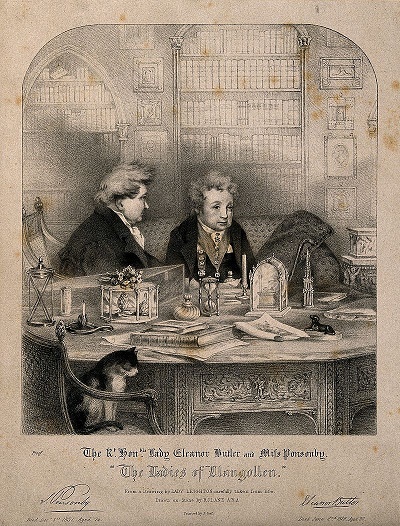THE LADIES OF LLANGOLLEN
To celebrate PRIDE month, each week we will be giving you a short biographical history of LGBTQIA+ icons in and around Wales. This week we will be kicking it off with ‘The Ladies of Llangollen’.
Eleanor Butler (1739-1829) and Sarah Ponsonby (1755-1831) were originally from Ireland but moved to Plas Newydd, Llangollen in North Wales in 1780 to escape the pressures of traditional marriage.
They lived together for fifty years and even had their books and glassware engraved with both sets of intials as well as having their letters jointly signed. There has been a great deal of speculation regarding the kind of relationship they had with each other. Below are some historians’ and scholars’ views.
Their relationship has been compared to a Boston marriage, or a romantic relationship between two women who live together and have marriage-like relations. Others believe the two had a romantic friendship rather than a sexual relationship.
According to Norena Shopland, present beliefs that differentiate same-sex relationships from romantic friendships indicate that they had a sexual relationship. According to Fiona Brideoake, the term “queer” is more acceptable than the archaic and specific label “lesbian,” especially because queerness is a broad notion defined by its variance from typicality.
People celebrated their relationship as a way of mourning the relationships they were unable to build, according to Brideoake. According to Coyle, “a succession of their beloved dogs were named Sappho.”
What made these women so remarkable is their devotion to one another despite going against what was deemed as the ‘Victorian ideal’, something people have been inspired by for generations.
Butler and Ponsonby are buried together, along with their devoted servant, Mary Caryll at St. Collen’s Church in Llangollen. Plas Newydd has now been converted into a museum.
The brown velvet bag which belonged to the Ladies of Llangollen is part of Storiel’s collection.


